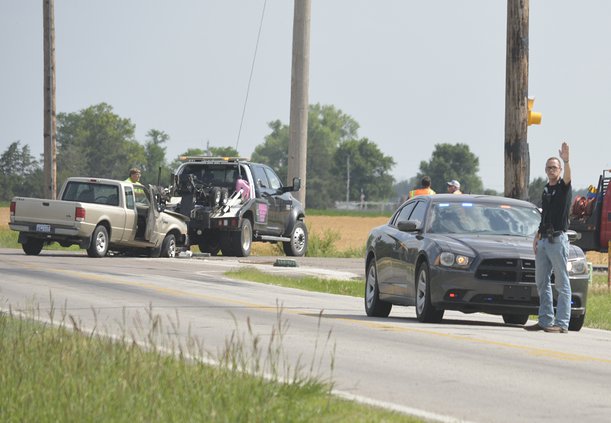A pair of road improvement efforts, both targeting motorist safety, are rolling forward following action by the Barton County Commission Monday morning.
Approved was participation in the next round of the Kansas Department of Transportation High-risk Rural Road Program involving the troubled intersection at North Washington Avenue and 30 Road, and a widening of NW 50 Road.
“We were successful in applying for the project,” County Engineer Barry McManaman said. These involve signing upgrades at the intersection, as well as the extension of a concrete drainage structure on NW 50 Road east of NW 10 Avenue.
KDOT will pay for 90% of the design, construction, and inspection costs. Barton County will pay for 10% of the design, construction and inspection costs and 100% of the costs for right of way and utility adjustments.
The KDOT estimate for design, construction, and inspection is $354,691.
KDOT has requested the County’s approval of this agreement. Barton County’s share of $35,469.10 should be encumbered from Federal Funds exchange money.
A separate three-party agreement for the design work will be processed at a later date.
The county has recommended an engineering firm to develop the plans and contract documents and McManaman said they are waiting for KDOT’s blessing. The timing of plan development and bidding aren’t known yet.
What is involved
The intersection improvements will increase driver awareness of the stop condition on North 30 Road and provide some more warning of the intersection for all motorists, he said. These might include LED-lit stop signs, overhead lighting, other high-visibility measures such as radar-operated speed signs, and wider rumble strips.
“We will see what the design team comes up with,” McManaman said.
This junction has been the scene of two serious crashes last year and the topic of much discussion.
Following the fatal crash that killed 18-year-old Shealee A. Stover on April 17, 2018, a number of changes were made at the corner. Then, on June 11, Francis Haberman, 91, was seriously injured when his pickup was struck by a trash truck.
New, larger, 48-inch stop signs, larger “Cross Traffic Does Not Stop” signs and larger “Stop Ahead” signs, all with ultra-high grade reflectivity, were installed. The speed limit was also amended, extending the 45 mph zone a half mile north of the corner. Prior to the change, the speed limit on Washington jumped from 45 miles per hour south of 30 Road to 55 north of it.
The same new speed also applies to 30 Road a half mile west of the corner and from the corner east to U.S. 281.
Additional rumble strips were also added on 30 Road.
At the concrete box location west of the county-owned memorial parks, 50 Road has a drop-off only two feet from the outside white line and close to the edge of the pavement. So, widening the box improves roadside safety by establishing a wider shoulder and moving the drop-offs at the ends of the box further from the driving lanes.
The two projects were among those received by 16 counties for a combined total of approximately $4.5 million in funding to improve safety as part of KDOT’s HRRR program. Counties sent in applications for this program from November 2018 to the end of January, with projects selected earlier this month with the funds available in Federal Fiscal Year 2021.
Projects in this program fall into one of two categories – systemic or site-specific. Projects in the systemic category are 100 percent federally funded and aren’t required to provide a match. Site-specific projects are 90 percent federally funded and a county contributes up to 10 percent of the project cost.





